A roof filled with solar panels in different colors creates ‘beautiful energy’
The boring uniformity of solar panels on the roof of Vertigo is being cracked. Since 2014, several experimental solar panels and solar installations have been placed on the roof of the faculty building. Many of them have a special design and have been fitted with lively colors. This is the vanguard of future developments in the Dutch property market. “People want to have a choice between different models, just as with cars,” is how project manager Roland Valckenborg explains the rapid growth.
The rapid pace of the development is obvious at the third floor of Vertigo. The roof is filled with solar panels. Recently, the test setup was expanded from six to eleven solar panels. Operating under the name SolarBEAT, TU/e and Solar Energy Application Centre (SEAC) work together on innovative solar panels. A mission no one could have failed to notice, given the enormous banner attached to Vertigo. ‘Solar Energy Research’ it reads in large fonts.
There is great demand. “During the past five years, we carried out twenty research projects involving 57 companies, ranging from one-man companies to multinationals,” says Valckenborg. Commissioned by and in cooperation with businesses, TU/e and SEAC test and develop new technologies and models for solar panels.
Shapes and colors
Obviously, a solar panel’s efficiency remains a vital factor, but the design becomes increasingly important to buyers. This creates all kinds of niche markets for solar panels with alternative designs and colors. Valckenborg: “SolarBEAT links building companies, architects, installers and producers of solar panels. They share knowledge and often launch products on the market together.”
The project manager describes SolarBEAT as ‘self-supporting and non-profit.’ Costs are covered by the participating commissioners. They aim is a round-the-clock schedule, and this is a reality already. The eleven panels are all in use for research. “But we want to use the room that becomes available as quickly as we can,” says Valckenborg.
Semi-manufactured products
Valckenborg finds Vertigo an ideal location for research. It is located in the middle of a built environment, with the faculty of the Built Environment nearby. He emphasizes that it is not just about solar panels, but about the product as a whole. “Solar panels are semi-manufactured products usually made in China. The Dutch commissioners develop them further into unique building elements for the Dutch market. Water, hail and wind resistant and aesthetically attractive.”
The broadening and deepening of the market for solar panels creates new opportunities for renewable energy. Valckenborg is driven by a personal mission to create a green world. “It is my passion. I spend many hours each day thinking about it and the developments take place rapidly. Although to some, not rapidly enough,” he says with a smile. Valckenborg alludes to the high school students who went on strike in early February and held a march for a better climate in The Hague. “But don’t get me wrong, I also believe that the process towards sustainability in the Netherlands should take place faster. I absolutely sympathize with those who play a leading role in the climate agreement, and even more so with the younger generation. They have the future!”
Solar Highways
The Solar Energy Application Centre (SEAC) from Eindhoven is also involved in the realization of a highway noise barrier next to the A50 in which double-sided solar cells have been incorporated. This so-called ‘Solar Highway’ is 400 kilometers long and 5 meters high, making it the largest of its kind in the world. The installation, located near the town of Uden, was taken into use on Monday, February 18. The noise barrier reduces traffic noise and supplies approximately 145 to 175 megawatt hours of solar energy, enough to provide 40 to 60 households with green electricity. The advantage of the double-sided solar cells is that daylight from both east and west can be converted into energy.
During the preliminary phase, SEAC carried out research with a test setup in Den Bosch. Now, SEAC is part of a consortium of Dutch business companies and the Netherlands Organization for applied scientific research (TNO) and the department for Public Works and Water Management (Rijkswaterstaat). They will test the 136 solar panels that were incorporated in the noise barrier. The project, which is budgeted at 1.4 million euros, will be paid for by the EU. If the trail proves successful, the remaining 1250 kilometers of noise barriers in the Netherlands might also be used to supply green energy in the future.
Behind the screens
The solar panels themselves seem like nothing special, simply a standard model. The trick is located behind the screens. Startup company Taylor from Eindhoven developed a new kind of power electronics that makes it possible for solar panels to function more effectively despite hinderance from shadow. “Only by testing them under real weather conditions can we accurately assess the technology,” says Roland Valckenborg.
Colors and structures
Several different solar panels, of different colors and structures. The two different photovoltaic (PV) techniques are not visible. The goal is to find out to what extent solar panels suffer from a loss of efficiency with the use of extra glass and foil to add color and structure. This project, in which many different parties are involved, is called ‘PV Opmaat’ (PV CustomFit).
Solar thermal energy
The influence of the colors green, yellow and orange is tested in these panels as part of the Envision project. This so-called ‘solar thermal energy system’ is used to heat water. A mix of water and glycol with different temperatures runs through the tubes with the purpose of finding out what the effects are. The ice forming on the panels is visible. “Outdoor testing is crucial to the development process,” says Valckenborg. “By testing it outdoors for a year, you can prevent a flawed product from finding its way to the market.”
Terracotta
A terracotta-colored solar panel is being tested for efficiency. It will soon fit onto all red-colored roofs in the Netherlands without contrasting with the terracotta tiles. Developed by the Eindhoven based company Aerspire.
Solar energy measurement system
The solar energy measurement system and weather station are crucial to SolarBEAT’s solar energy research. The tracker follows the sun at all times, enabling it to make a distinction between irradiation coming directly from the sun (so-called ‘direct irradiance’) and irradiation that has been scattered by molecules and particles in the atmosphere (so-called ‘diffuse irradiance’). This is important to understand and calculate what the irradiation will be under different orientations and angles of the installation. The measurement equipment is of the highest standard. Only a few institutions in the Netherlands work with a similar tracker for solar irradiation, among them the Royal Netherlands Meteorological Institute (KNMI).
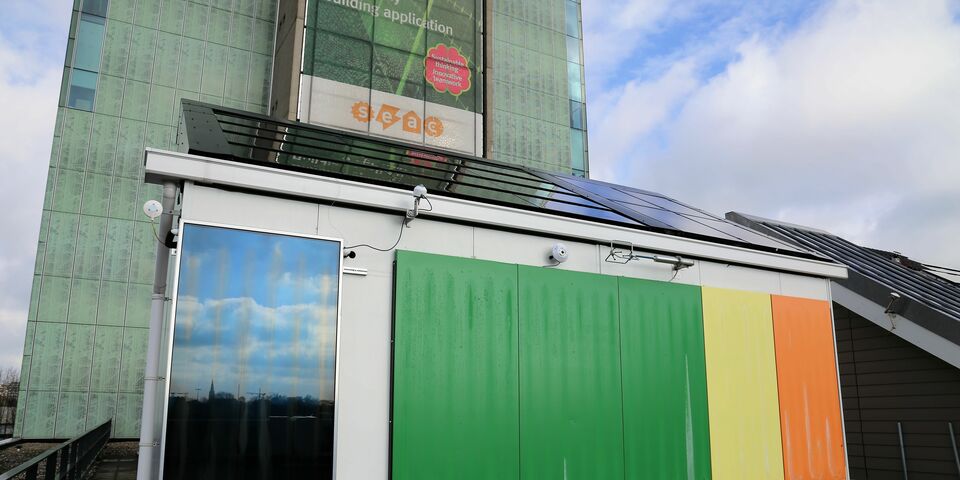

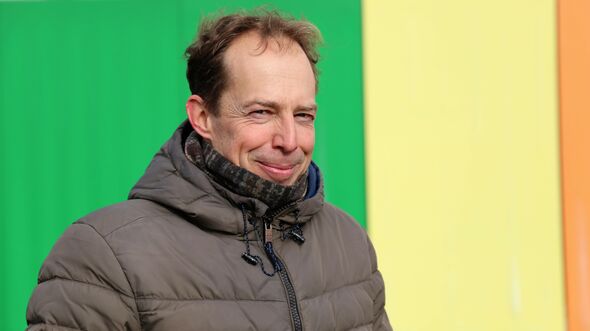
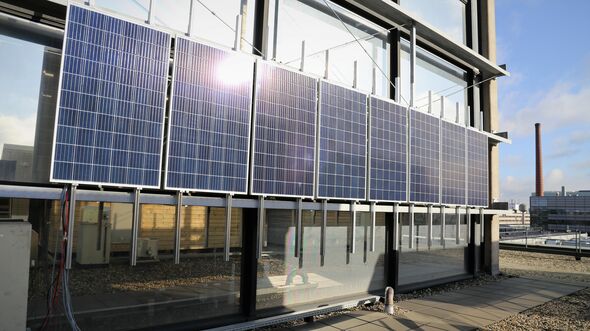
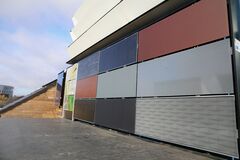
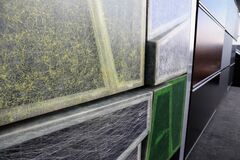
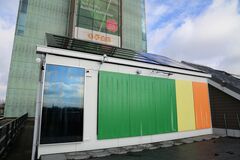
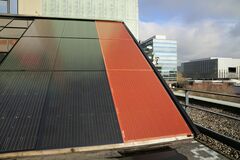
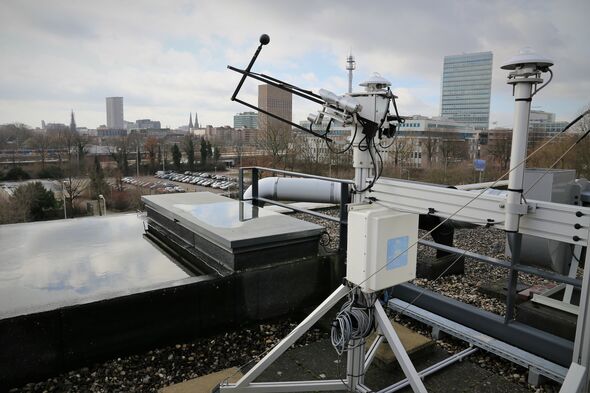
Discussion